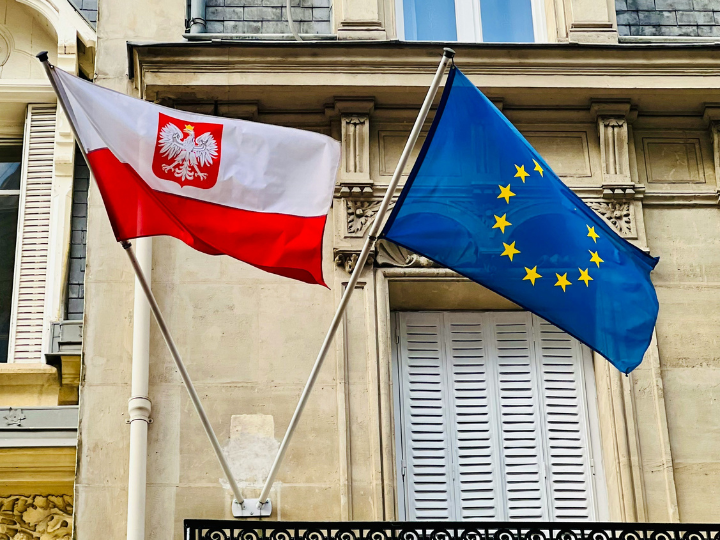by Frederic Simon*
“We need to accelerate” the gas industry’s conversion to hydrogen and other low-carbon gases in order to reach the EU’s climate objectives, said Tudor Constantinescu, a senior advisor at the European Commission’s energy directorate.
Investing now in low-carbon gas infrastructure will help avoid a lock-in effect into fossil assets that otherwise risk becoming stranded as Europe moves towards net-zero emissions, he told a EURACTIV online event on Wednesday (13 May).
“If we want to reach 50-55% decarbonisation by 2030, it means putting more investments upfront – more CAPEX now – in order to lower the overall cost during the lifetime of this investment,” Constantinescu argued.
The European Commission has made hydrogen “a central element” of plans to decarbonise Europe’s industry – especially sectors such as steelmaking, chemicals, and heavy-duty transport, which cannot easily switch to electricity.
Earlier this year, the EU executive said it would launch a “Clean Hydrogen Alliance” after the summer break, bringing together companies, governments and research organisations around the development of a hydrogen supply chain in Europe.
Four infrastructure pathways
But building a hydrogen infrastructure will take time. Gas Infrastructure Europe (GIE), an industry association, has identified four main pathways – ranging from the direct shipment of hydrogen into Europe via pipelines or the conversion of other gases into hydrogen after they land at LNG import terminals.
And while these options are still at exploratory stage, some are already raising concerns that the required transformation in the gas industry will not happen fast enough to support Europe’s climate objectives.
“This is going to make things extremely complicated,” said Jonathan Stern from the Oxford Institute of Energy Studies, who spoke at the EURACTIV online event.
“I think this could take us a lot of time, just as it has taken us a lot of time for natural gas,” he told participants, reminding that it took 30 years to build a functioning EU-wide market for natural gas.
The four infrastructure decarbonisation pathways were outlined by Thierry Deschuyteneer, a Belgian engineer who chairs the “Terminal for the Future” working group at GIE, which supported the EURACTIV event.
-The first involves imports of green gases such as bio-LNG or synthetic LNG directly into Europe, using existing terminals. The decarbonisation process would take place upstream, by the gas exporting countries.
-The second pathway involves decarbonising gas at the terminals themselves, after it is shipped to Europe. “That’s probably a temporary solution but it could start the hydrogen economy on a big scale,” Deschuyteneer said.
-A third option is to bring hydrogen generated outside of Europe – in places like North Africa and the Arabic peninsula where it can be produced cheaply – and bring it to Europe via LNG terminals, which would then need to be upgraded.
-A last option is to use other energy carriers like Ammonia and methanol, which can be converted into hydrogen when they reach Europe, at the terminal level.
GIE is preparing a detailed cost-benefit study for publication in October that will assess the pros and cons of those different options, Deschuyteneer said.
The study “will come with policy recommendations as many of those technologies are not mature yet,” he admitted. But he expressed confidence that the industry could speed up its transformation.
“Of course that will require retrofits,” Deschuyteneer acknowledged, saying the costs of retrofitting an LNG tank into a hydrogen tank were not yet clear. “It’s not easy but I’m an engineer and I’m confident that we will find a way to do it,” he said.
Scaling up
Jorgo Chatzimarkakis, a former German liberal MEP who is now secretary general of Hydrogen Europe, said the main question facing the industry now is “how to scale up” production.
The EU recovery plan for the COVID-19 crisis offers an opportunity to speed up those plans, particularly when it comes to infrastructure, he said.
Chatzimarkakis referred to the 2x40GW green hydrogen initiative, published in April by Hydrogen Europe, which aims to promote “a massive increase” of electrolyser production in Europe.
The initiative relies partly on imports of hydrogen produced cheaply from places like North Africa, the Arabic Peninsula, and Ukraine, which all have the possibility of producing green hydrogen “very cheaply” using solar powered electrolysers.
The next question is how to transport the hydrogen, he said. “We have of course gas pipelines, which needs to be retrofitted,” Chatzimarkakis said. “But we also see a lot of hydrogen being liquefied” at -253°C and shipped by containers to Europe, he pointed out.
However, he admitted that there are still many open questions, chiefly related to costs.
“A lot of these things are new. If you ask me now what’s the cost of a liquefied hydrogen hub to replace an LNG hub – we don’t know,” he said. “But it is possible,” he added, saying the hydrogen sector “can learn a lot” from the LNG industry.
Managing the transition
There are also questions as to how the transition to hydrogen can be managed from an infrastructure perspective.
“We risk having a cliff-edge if we repurpose terminals” to accept hydrogen only, said Jonathan Stern, from the Oxford Institute of Energy Studies.
A key issue is “whether there will be a transitional period where terminals will be able to receive both LNG and other products like hydrogen,” Stern pointed out, saying LNG exporters deserve “a respectable amount of notice” to adapt.
Despite the uncertainty regarding the costs, one thing appears clear: “The future will be much more colourful,” said Thierry Deschuyteneer, with parts of a terminal fitted for natural gas, and other parts for hydrogen or Ammonia. “And then we need a framework that can enable all these technologies to find the best added value.”
*first published in: www.euractiv.com




 By: N. Peter Kramer
By: N. Peter Kramer

